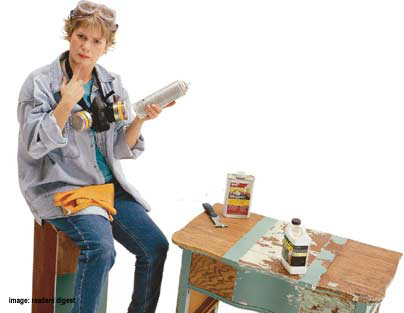How to... use paint stripper
If you love to buy secondhand furniture you'll know how difficult it can sometime be to remove layers upon layers of paint. Paint stripper is a great way to reduce some of the excess layers before you start the sanding process.
HERE'S HOW:
Apply the stripping agent in one direction and leave it on for the time period specified in the directions. Brushing or wiping in the other direction could prematurely dry out the agent. You should notice the paint begin to bubble as the stripping agent does its work. Use a putty knife or scraper to remove loosened paint.
You might want to use an old toothbrush to remove paint from hard-to-reach areas. Use an abrasive pad with warm soapy water to remove the remaining paint residue.
DIY Tips:
Solvent-based strippers are faster, but they're more toxic and flammable; non-solvent-based strippers are slower but safer.
Whenever you strip furniture, wear protective gear including goggles, gloves and a long-sleeve shirt. Paint stripper can easily burn skin, so be very careful not to splash any on you.
If your paint stripper produces hazardous fumes, be sure to work in a well-ventilated area to reduce your exposure.
Non-flammable strippers may contain methylene chloride, which can slightly darken wood. If this happens, use oxalic acid to bring the wood back to its original luster.
Always follow the directions on the package.
The moisture involved in the stripping process will raise the grain of the wood.
Sand rough areas down with a fine-grain sandpaper, and remove any dust with a tack-cloth.
To clean up non-flammable liquid or gel strippers, simply collect the residue, spread it on a newspaper to dry, and throw it away.

